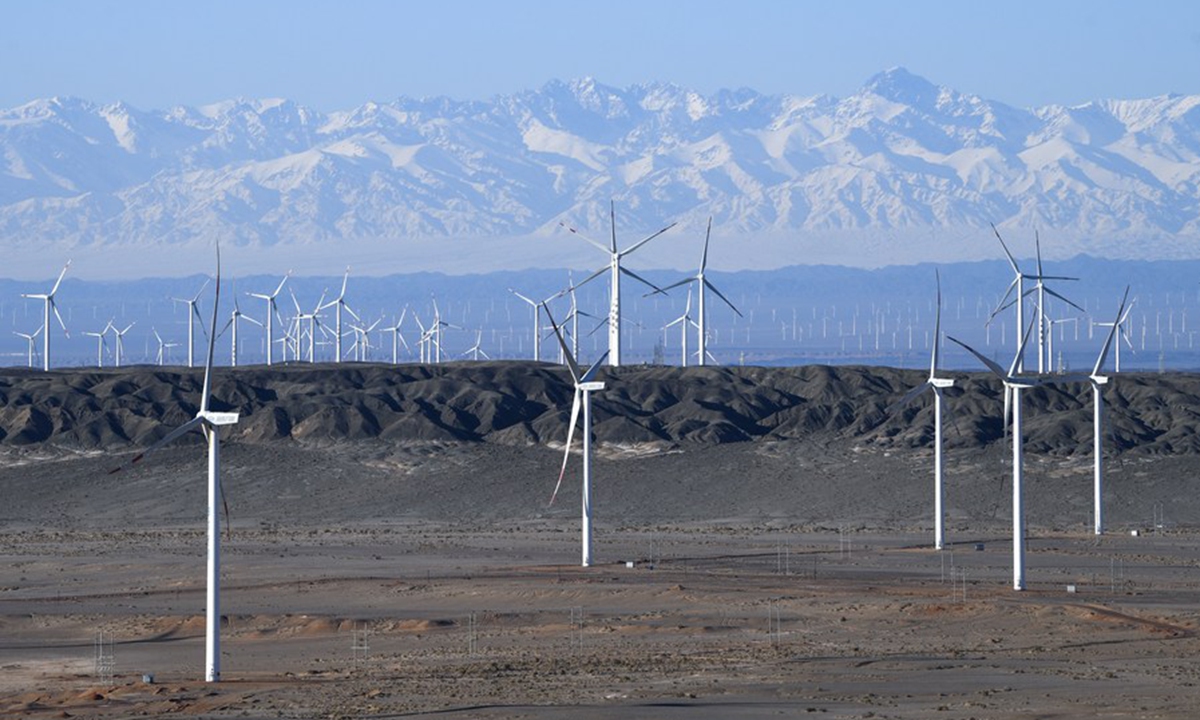80-100 gigawatts of wind, solar power to be installed annually in China

Photo taken on Oct. 23, 2019 shows the Nanfeng wind power field in Hami, northwest China’s Xinjiang Uygur Autonomous Region. (Xinhua/Zhao Ge)
Amid public concerns over the current electricity rationing and power shortages in some provinces in China, the National Energy Administration (NEA) has issued management guidance for the new energy industry. Analysts said the guidance will boost the use of power generated from new energy, and offers a solution to instability in power supply.
According to the guidance, power grid enterprises shall provide access for new energy storage projects in a fair and non-discriminatory manner. The battery projects used to store new energy power should be traceable and safe.
The guidance is also aimed at changing the attitude among power operators, which tend to prefer excluding power generated from new energy from the power grid. This notice is appropriate and also looks at the long-term plan, but it is not an immediate solution to the problem, Zhang Xiaorong, director of the Beijing-based Cutting-Edge Technology Research Institute, told the Global Times on Tuesday.
“Later is better than never. The guidance vows to manage and standardize the storage of new energy power, which is mostly stored in batteries at present. The future is the new energy industry. If energy storage management is insufficient, the development of related industries will be limited,” Zhang said.
The management of new energy storage projects is conducted by local energy administrators and local economic planners. The NEA specially singled out three power companies: the State Grid, China Southern Power Grid and Inner Mongolia Power (Group) Co.
These companies are required to carefully implement the interim management guidance, so as to promote the active, steady, healthy and orderly development of new energy storage, promote the construction of new power systems based on new energy, and support the realization of carbon peaking and carbon neutrality goals, according to the NEA.
Most operators of power grids around the world are unwilling to connect power generated from new energy to their grids, partly because wind power and solar generation are not stable, so voltage and frequency fluctuations have a big impact on the power transmission network, Sheng Honglei, associate manager of CyberInsight New Energy Technology Co, told the Global Times on Tuesday.
“The instability of wind power and solar power makes its necessary to store the electricity in a storage project and then connect it to the power grid with constant and stable power transmission. Using batteries is the current solution, but the safety of storage projects is a major concern,” said Sheng.
In April, a fire broke out at a solar power storage station in Beijing, followed by a sudden explosion, which made the safety of new energy power plants a priority.
Sheng said that China is encouraging the development of hydrogen electrolysis, which transmits electricity generated from wind and solar into water to production hydrogen, which will be directly used. But storage and transportation are also big problems, as hydrogen is unstable.
“In general, upgrading of technologies is necessary for the development of new energy power,” Sheng noted.
Sheng also said that to achieve China’s “dual carbon” goals, the industry has calculated that about 80 to 100 gigawatts of wind power and solar power plants should be installed in China annually in the next five years.
Source: Global Times, Sep 29, 2021
https://www.globaltimes.cn/page/202109/1235428.shtml?fbclid=IwAR3p0X-UZRIyTrS3Md7Wrt2wwaaLCP3RN2uRggqAdYk-G5ljJaa09v8lEAQ